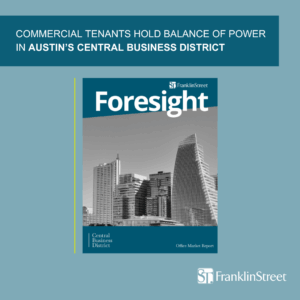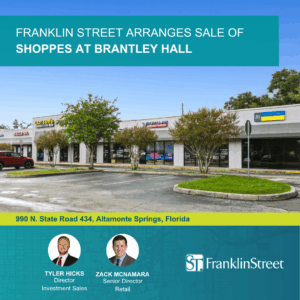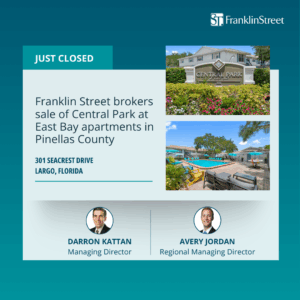When Fort Lauderdale broker Rick Tobin started selling apartment buildings as an offshoot of his hotel trades two years ago, he noticed new niche investors discreetly scooping up real estate across South Florida neighborhoods.
“This was a different breed of buyer than the typical buyer of apartment properties,” he said. “They weren’t asking about cap rates, and they weren’t asking about rents because they weren’t going to keep the tenants in there long.”
The investors were operators of residential drug and alcohol rehabilitation centers. And unlike traditional multifamily buyers interested in buildings that already generate rent, these investors preferred properties with month-to-month tenants or none at all.
They bought quickly and for cash, without the need for bank financing.
The main criteria: units with at least two bedrooms and two baths to house at least four tenants per apartment for weekly rents of about $250 per person or total monthly revenue of about $4,000 per unit. Zoning isn’t an issue since most live-in facilities don’t require special treatment if they operate as apartments without onsite medical services.
Instead of collecting about $900 per apartment for Class B or C suburban buildings, brokers say rehab operators can more than quadruple rental revenue by adding beds for tenants in recovery programs.
“The big picture is that they’re buying for a greater income than they would get just from the rentals,” said Tobin, owner of Premier Hotel Realty. “They want to move clients in so they can operate sooner rather than later, and they’ll pay a premium for that.”
From what West Palm Beach-based broker William Berthiaume II has seen representing buyers and sellers all along Florida’s East Coast, drug rehab clinic operators typically pay $10,000 to $20,000 above market rates for each unit in the multifamily complexes they purchase.
“When you pull the comps and see a buyer paying significantly higher per door, it’s probably a halfway house operator,” Berthiaume, vice president of commercial real estate at Real Estate Solutions Enterprise Group Inc., told the Daily Business Review. “The income they’re able to generate is so much more significant than just the typical operator.”
That might explain why the last deal Tobin arranged closed in about two weeks.
The buyer, Changes Recovery Center, paid $772,500 cash in September for a six-unit property in Pompano Beach that last sold for $423,000 in June 2012. It had an immediate need for units with short-term leases and outbid other prospects to seal the deal in 15 days from first viewing to closing.
The sale was one of three in the last 16 months for Tobin with different buyers.
Last July, he sold a four-unit building in Pompano Beach to an investor who later leased it at about 50 percent above market rates to a recovery center operating halfway houses on adjoining properties.
And in February, he sold a triplex in Fort Lauderdale that had been on the market for only 20 days.
“South Florida is an attractive area for therapists, staff and clients alike,” Tobin said. The area “is being promoted by many facilities as a wonderful environment to reflect and restart lives.”
‘Public Outcry’
It’s unclear how many sober houses operate in South Florida. Largely unregulated, these live-in facilities are springing up across the state to house addicts transitioning from detoxification clinics.
In recent years, major operators like Banyan Sober Living, Treatment Resources of Margate and the Recovery Place have made acquisitions in suburban Boca Raton, Pompano Beach, Fort Lauderdale and other cities.
But some Florida lawmakers wanted to reign in their operations to protect recovering patients and nearby residents.
In April, Florida legislators passed regulations to offer voluntary state certification through a new organization in the Department of Children and Families. Only certified agencies will benefit from referrals from state-licensed rehab centers, which care for about 85 percent of recovering addicts.
Matthew Mandel, a Weiss Serota Helfman Cole & Bierman partner who represents municipal clients, said he’s seen an upswing in applicants seeking zoning approval to convert multifamily properties into live-in recovery centers offering drug testing and other medical services.
If they encounter resistance, these groups readily seek accommodation under the Americans with Disabilities Act and the Fair Housing Act, which mandate reasonable accommodations for residents wrestling with drug addiction.
“There’s generally a lot of public opposition, but the key here is to ensure that elected officials follow the law, notwithstanding public outcry,” Mandel said. “Cities need a legitimate reason to reject these applications. … A lot of the time, the public outcry is based on unsubstantiated fears and stereotypes.”
Under the circumstances, brokers expect a rise in multifamily purchases from sober house operators.
“I get calls on this all the time,” Greg Matus, Franklin Street‘s regional managing partner for South Florida, said Monday. “These centers look like typical apartment buildings. A lot of people don’t even know they’re there. It’s not like the residents are doing drugs, having parties and making noise. A lot of them keep to themselves.”



